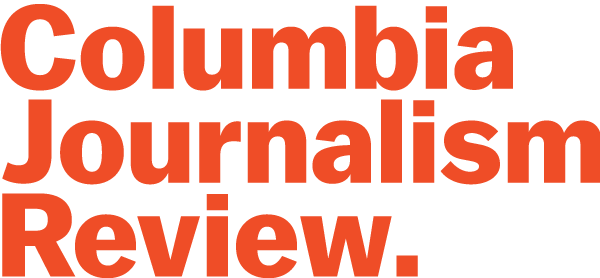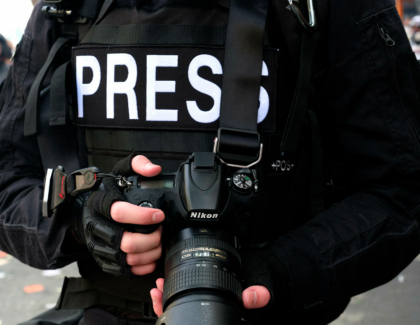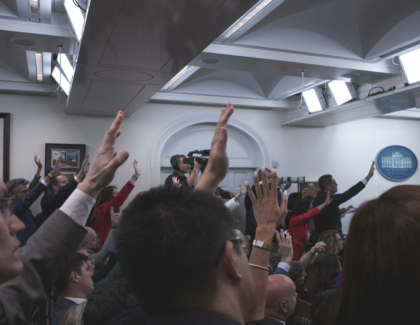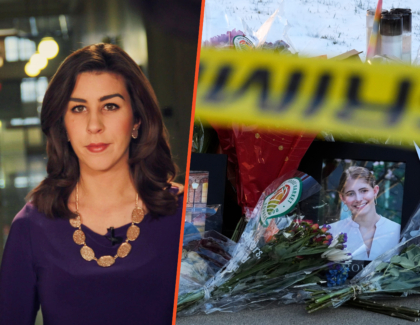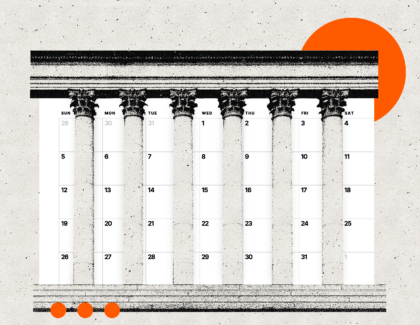Sign up for the daily CJR newsletter.
On the morning of June 5, 2022, the British journalist Dom Phillips and his friend Bruno Pereira, an expert on the Indigenous communities of Brazil, set out from the fishing village of São Gabriel on a motorboat along the winding Itaquaí River in the Amazon region. They were there to speak to fishermen for a book that Phillips was writing about solutions to environmental degradation in the Amazon. Phillips had been living and reporting in Brazil for fourteen years, and had discovered a passion for environmental reporting. The book was set to be his most ambitious project yet.
The region that the pair were visiting, which lies just on the edge of the Amazon’s pristine Javari Valley, has a reputation as a hub for illegal fishing, poaching, logging, and drug trafficking. Fishermen like those Phillips interviewed that morning regularly cross into Indigenous territory to make their catches—exactly the kind of threat to the forest and its peoples that the journalist hoped his book would address. Not that he was only interested in hearing from those who were fighting to protect the Amazon. “His approach was very much ‘I’m going to do everything I can to see all the different sides of this story and talk to as many people as I can,’” his friend and fellow journalist Jonathan Watts told me recently.
Tragically, this impulse toward deep and measured reporting would ultimately cost him his life. While traveling along the Itaquaí, Phillips and Pereira were pursued by two fishermen from a nearby village, who cornered and then shot them at close range. Ten days later, after an expansive and agonizing search, the bodies of both men were discovered buried in the forest. The target of the killing, it would later be revealed, had been Pereira; he was known for his work patrolling Indigenous lands in an effort to stop illegal fishing. The killers harbored a grudge over what they saw as his interference with their livelihood. “Dom was killed, like many journalists are, because he was a witness to a crime,” Watts told me.
Watts met Phillips in 2012, shortly after moving to Brazil to work as a correspondent for The Guardian. They quickly became friends, spending their free hours hiking in the hills around Rio de Janeiro and on heart-pounding bike rides up the Corcovado to the Christ the Redeemer statue, an exercise they called Christ on a Bike. (“I don’t know if that joke works in the US,” Watts explained to me recently. “But it’s an expression in the UK.”) Watts remembers Phillips for his wry sense of humor and endless curiosity. “His eyes would lock in as he began one of his interrogations,” Watts told me. “If he found a subject that interested him, he would grill you, no matter the subject or the context.”
Reeling from the news of Phillips’s murder, a group of his friends and colleagues, including Watts, resolved to honor him by bringing his final work to publication. It was an unusual and challenging project; Phillips had outlined a vision for the chapters of the book, but had only drafted three and a half out of a total of ten. The group was tasked with piecing together notes written in Phillips’s sometimes indecipherable scrawl and, in many cases, retracing his steps. The result of their efforts, How to Save the Amazon: A Journalist’s Fatal Quest for Answers, was published earlier this month. Last week, just short of three years since Phillips and Pereira were murdered, I spoke with Watts about channeling Phillips’s vision, the power of journalistic collaboration, and the importance—and challenges—of approaching a story from all sides. Our conversation has been edited for length and clarity.
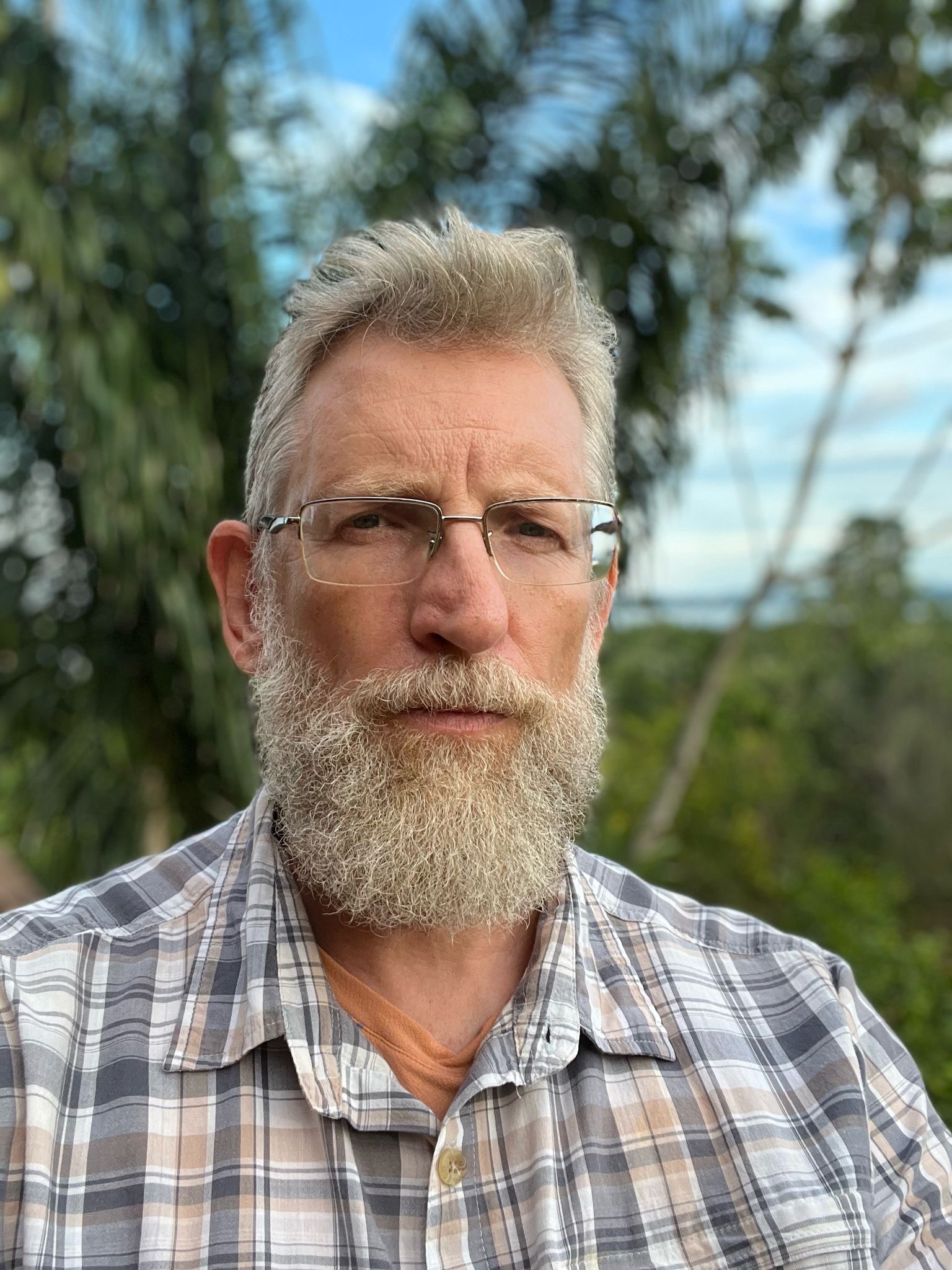
YRG: How did you first get involved in this project?
JW: I got involved almost immediately after we discovered the news we’d been fearing—that Dom and Bruno Pereira had been murdered. I was inspired by Forbidden Stories, which has done several projects where they have followed up on the work of a journalist who had been killed. The idea is that, even if you kill a journalist, you can’t silence the story. I felt a particularly strong responsibility because I had been living in the Amazon and had done a lot of environmental coverage, and because Dom was a friend. It was a great honor when Dom’s widow, Alessandra Sampaio, asked me to lead the project, but I want to emphasize just how many people were involved: there were five coordinators, eight contributing writers, twenty editors, and hundreds of people who donated. It felt sometimes like it was not just a book, but a movement. It was a great solace. I don’t think I’ve ever understood the word “solidarity” so strongly in my life.
How did you choose the contributors who would ultimately end up completing the book?
One of the central issues we had to resolve was the question of whether one person or a group of people would write the remaining chapters Dom had outlined. The publisher’s editor was leaning toward one person, which would have been simpler in a lot of ways. But I felt that, if it were one person, it would no longer be Dom’s book. If we did a collaborative work, it would be Dom’s name on the cover, and each of the collaborators would take on one chapter. The collaboration itself would also then be a political gesture of solidarity among his friends and admirers. When it came to choosing contributors, we were spoiled for choice. Dom had a lot of very talented journalist friends, and we could have called on an awful lot of people who had experience writing long-form pieces. The choice we had was this: Do we choose friends who were closest to Dom, or do we choose people who are more familiar with the subject? We decided on the latter, and that we would try to make it as much of an expert book as possible, because Dom was trying to write an authoritative work.
The book includes a poignant afterword written by Beto Marubo, an Indigenous leader from the Javari Valley, in collaboration with the journalist Helena Palmquist. Why did you choose to end the book this way?
At various points in the book, Dom writes about the importance of listening to Indigenous voices, about how they are essential to the Amazon rainforest. There was a strong feeling among us that the solution should not be imposed from outside the forest but come from inside. In that spirit, we decided to give the final word to an Indigenous writer.
To complete this project, you were tasked with channeling Dom’s vision without being able to consult with him directly. How did you approach that challenge?
We wanted to [align] as closely as possible with Dom’s intentions, but of course we couldn’t know every single idea he had about the book. Some of the unfinished chapters were quite well described in the outline, but for others there was a lot of guesswork. It was like trying to solve the riddle of what Dom was thinking. I asked all of the contributors to engage in a dialogue with Dom—with the Dom of his notes, with the Dom of his outline, with the Dom that they remembered from their own encounters—that, I hope, kept him involved in the process. I think it also allows for a consistent style between the chapters. They’re all vivid, first-person, travelogue-style narratives that try to take the reader into the Amazon. We sent the chapter contributors out to follow in Dom’s footsteps, to talk to the people he had talked to, and to try to explore the solutions that he was looking at. You could see in his reporting that he was really determined to see two sides of every story, to write not just about the people defending the rainforest but also those threatening it, in order to understand why they were doing what they were doing.
We also decided that we would tell readers at the beginning that this is a book that is stained with blood. There’s clearly a rupture in the middle [when it transitions from chapters written by Dom to those written by the contributors], which could have been jarring. We tried to make it a distinctive feature of the book instead; when you get to the end of what Dom had written himself, there’s a picture of the memorial to Dom and Bruno and a black page on the other side of that. We hope that it’s an impactful way to convey the sacrifice that Dom and Bruno made, and the kind of sacrifices environmental defenders and journalists across the world have made. It became a statement rather than something we had to hide or smooth over.
The final chapter of the book, which you wrote, addresses the political backdrop against which Dom was reporting. Why was this context important?
When Jair Bolsonaro took power [as president of Brazil, in 2019], Dom wrote me many WhatsApp messages about how [his election] would make life more difficult and dangerous for people who were standing in the way of extractive businesses. Bolsonaro had been [accusing advocates for environmental protection] of spreading fake news while giving a green light, at least verbally, to a lot of illegal activity in the Amazon, saying that it would be good for the economy. This was the environment that allowed Dom and Bruno’s killers to feel that they could get away with this murder, and to believe that they were in the right while the people trying to stop them destroying the environment were in the wrong. It highlights how brave Dom was to go there and to listen to people. But it’s not just relevant to what’s going on in Brazil. These kinds of [conditions are surfacing] in many parts of the world right now, including, or maybe especially, in the United States.
What legacy did Dom and Bruno leave behind?
Bruno and Dom are now locked in eternal brotherhood, as icons. In Brazil, you see the pictures of the two of them together, staring down at you from posters on the walls, and murals, and political banners, and carnival floats. I think when you look at the way they both worked, they were trying to use their positions to amplify the voices of people who usually are not given a voice—Indigenous people in the forest in particular. I think after death they continue to do that work.
Other notable stories:
- Yesterday, Vanity Fair announced that Mark Guiducci—previously the creative editorial director at Vogue, which is also owned by Condé Nast—will be its next top editor. He succeeds Radhika Jones, who surprisingly stepped down earlier this year—though his title won’t be editor in chief, as Jones’s was, but “global editorial director,” overseeing Vanity Fair’s editions across the world. In an interview with Katie Robertson, of the New York Times, Guiducci was coy on his editorial plans, but suggested that they would involve using “old school” storytelling tools in new ways. “There has never been a better moment for Vanity Fair than right now,” Guiducci said. “You read the news every morning and it’s so operatic and it’s drama at scale—it feels like a co-production between Marcel Proust and Michael Bay.”
- Over the weekend, Terry Moran, a veteran journalist at ABC News, wrote a post on X decrying the capacity for hatred possessed by President Trump and his top adviser Stephen Miller, describing it as the latter’s “spiritual nourishment.” Amid a swift outcry from the administration, ABC suspended Moran; then, yesterday, the network said that his contract is expiring anyway, and will not be renewed. Writing before Moran’s departure was confirmed, the media critic Margaret Sullivan assessed whether ABC was right to punish him, arguing that while “plenty of observers cheered Moran for simply describing the reality he has observed”—and that she’d hate to see him lose his job—the post was “well outside the bounds of what straight-news reporters do.”
- Recently, Florida’s Department of Children and Families sent a cease-and-desist letter to a reporter and editor at the Orlando Sentinel, accusing the reporter of threatening foster families in a bid to smear a highly controversial initiative spearheaded by Casey DeSantis, the wife of Florida governor Ron DeSantis. The Sentinel slammed the agency’s description of its reporter’s conduct as “completely false,” and pledged that it wouldn’t be intimidated into dropping the story; meanwhile, First Amendment experts said that the letter appeared to be an example of attempted official “prior restraint” of unpublished reporting, which is generally unconstitutional.
- For Nieman Lab, Nik Usher reflects on the lessons of their new book, with Jessica C. Hagman, which concludes that extremist small-town politicians can ride “a few days of nonstop coverage from mainstream news media—and catapult themselves out of obscurity.” They cite the example of Darren Bailey, a back-bench state lawmaker in Illinois who quickly gained a national profile and used it to run for governor, and whose rise was fueled “in part by a broken, overly concentrated and networked news ecosystem, a consolidated right wing news media, and news norms that pushed Bailey’s name into the public locally, regionally, and nationally from the get-go.”
- And the Chauncey Bailey Project—a group that formed to carry on the work of a journalist who was shot dead in 2007 while investigating a bakery chain in Oakland—reports that Bailey’s killer, Devaughndre Broussard, has been released from prison on parole. Broussard took a plea deal in exchange for testifying against the chain’s leader, who he said ordered the hit. Bailey’s sister told the project that the family hopes Broussard “has reformed and becomes an asset to the community.”
Has America ever needed a media defender more than now? Help us by joining CJR today.

